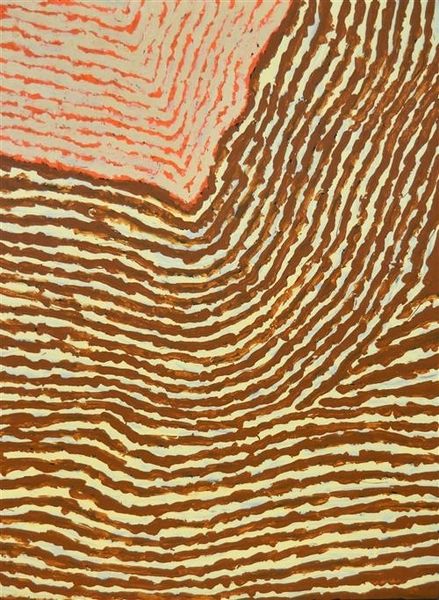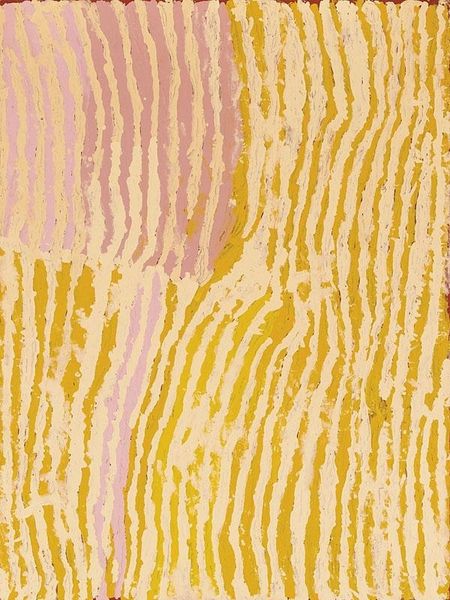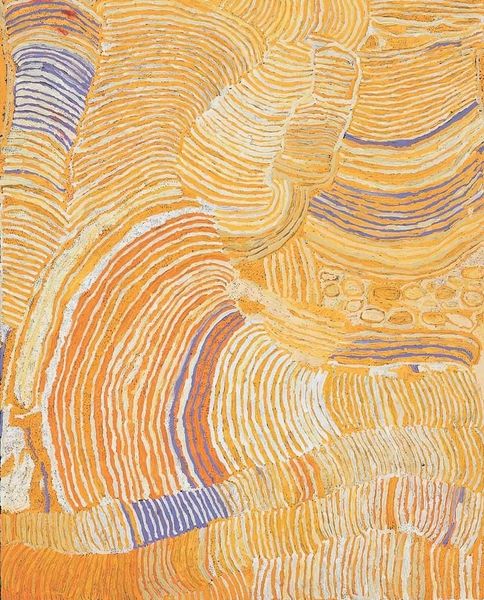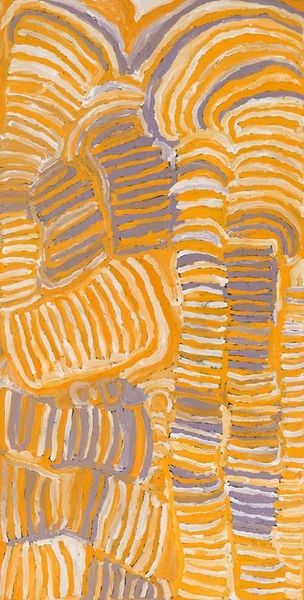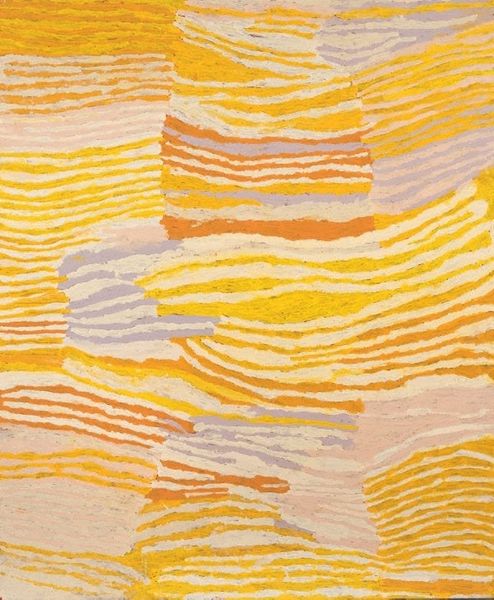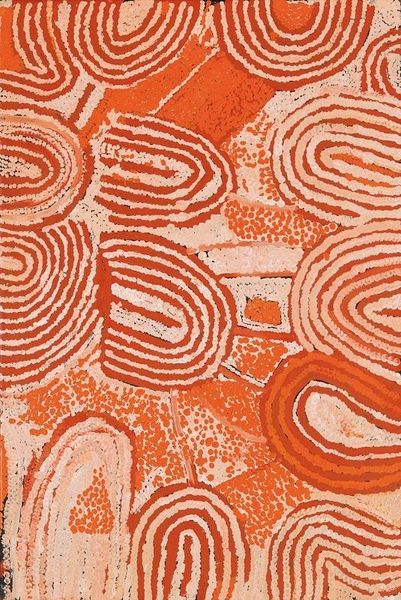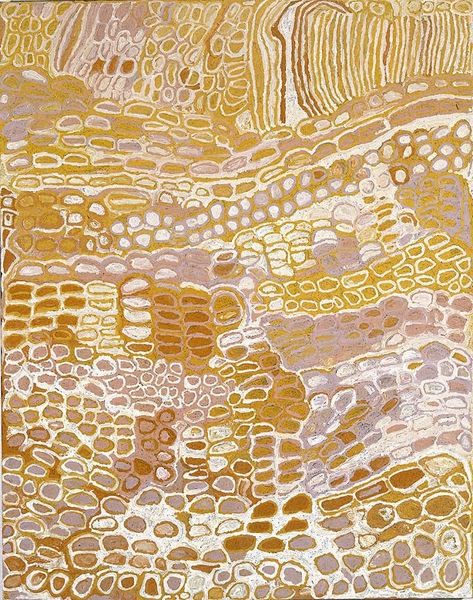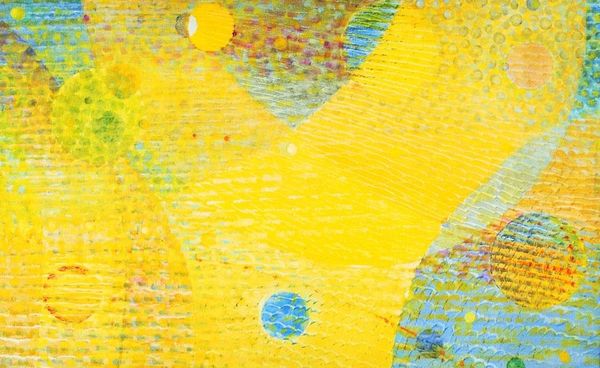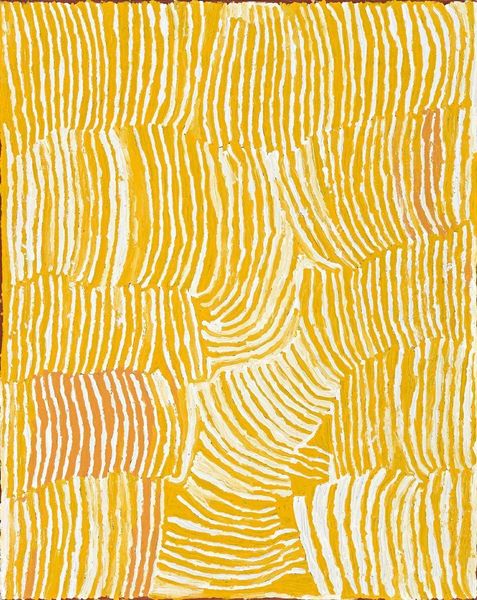
painting
#
natural stone pattern
#
naturalistic pattern
#
organic
#
wave pattern
#
painting
#
geometric pattern
#
abstract pattern
#
organic pattern
#
abstraction
#
layered pattern
#
pattern in nature
Copyright: Makinti Napanangka,Fair Use
Editor: Here we have "The Rockhole Site of Lupulnga," an acrylic painting created by Makinti Napanangka in 2001. It's a captivating composition of layered lines in earthy tones. It almost looks topographic. How do you interpret this work? Curator: I see this piece as a powerful assertion of Indigenous presence within a Western art context. Consider the rise of Indigenous Australian art in the late 20th and early 21st centuries. It's not just about aesthetics; it's a negotiation for cultural visibility and political voice. The use of acrylics on canvas, rather than traditional materials, signals an adaptation to the contemporary art world, a deliberate act of translation. Editor: That makes me wonder about the story behind Lupulnga, this "Rockhole Site." How does that feed into this power dynamic? Curator: Exactly. "Rockhole Site of Lupulnga" likely holds deep cultural significance for Napanangka and her community. It could be a place of ancestral importance, a source of water, or a site of Dreaming stories. By presenting this landscape, abstracted yet clearly referencing a specific place, she is claiming space – both physical and metaphorical – within a society that has historically sought to dispossess Indigenous people. Consider how the act of representing Indigenous land reclaims it from colonial narratives. Editor: So, the very act of painting and exhibiting this work becomes a form of resistance and cultural preservation? Curator: Precisely. And further, consider the role of museums and galleries in shaping how this work is received. Are they adequately acknowledging the cultural protocols and intellectual property rights of Indigenous artists? How can institutions better serve as platforms for Indigenous self-representation rather than perpetuating colonial modes of display? Editor: I never thought about it that way. This definitely gives me a lot to consider about the power dynamics embedded in seemingly abstract landscapes. Curator: It shows how much we can uncover about art by understanding the institutions and socio-political factors around its creation and display!
Comments
No comments
Be the first to comment and join the conversation on the ultimate creative platform.

